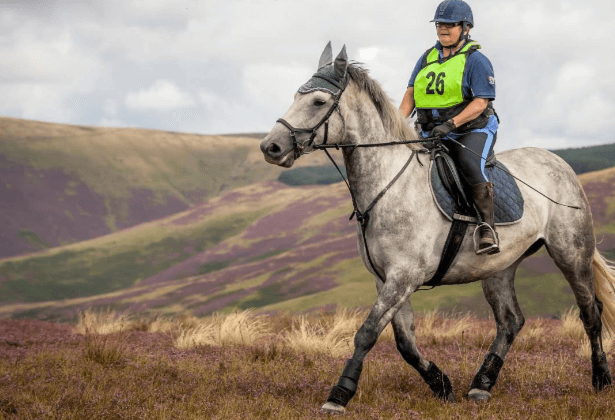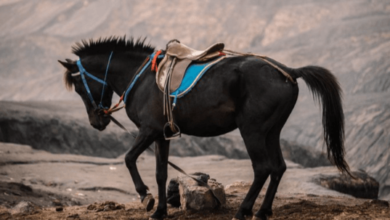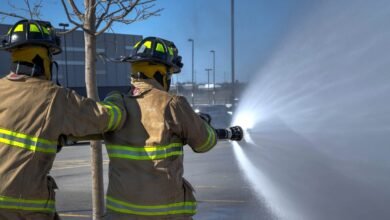What are the critical aspects of caring for a horse during an endurance ride?

Introduction
Endurance riding is a thrilling equestrian sport that tests the stamina and partnership between horse and rider. However, the success of an endurance ride heavily depends on the care provided to the horse. Proper care ensures the horse remains healthy, comfortable, and capable of performing at its best. This article delves into the critical aspects of caring for a horse during an endurance ride, providing a comprehensive guide for riders aiming to excel in this demanding discipline.
Pre-Ride Preparation
Preparation is the cornerstone of a successful endurance ride. Ensuring that the horse is in top condition involves several critical steps.
Veterinary Check
A thorough veterinary check before the ride is essential. This ensures that the horse is fit and free from any underlying health issues that could compromise performance or safety.
Conditioning
Conditioning involves a structured training regimen that builds the horse’s endurance, strength, and resilience. This typically includes long, slow distance rides, interval training, and hill work.
Nutrition
A balanced diet rich in energy-dense foods is crucial. The diet should be tailored to provide sufficient calories, proteins, vitamins, and minerals to support the horse’s rigorous activity.
Equipment Check
Ensuring all tack and gear are in excellent condition can prevent injuries and discomfort. This includes checking the fit of the saddle, bridle, and all protective equipment.
Hydration Management
Hydration is vital for maintaining a horse’s health and performance during an endurance ride.
Importance of Hydration
Water is critical for regulating body temperature, maintaining blood volume, and facilitating digestion and metabolism.
Recognizing Dehydration
Signs of dehydration include dry mucous membranes, sunken eyes, and a prolonged capillary refill time. Monitoring these signs can prevent severe health issues.
Electrolyte Supplementation
Electrolytes help maintain fluid balance and nerve function. Supplementing with electrolytes, especially in hot weather, can prevent imbalances that lead to fatigue and metabolic problems.
Feeding Strategy
Feeding strategies during an endurance ride should focus on providing continuous energy.
Balanced Diet
The horse’s diet should include a mix of carbohydrates, fats, and proteins. Forage should form the base, supplemented with grains and concentrates as needed.
Timing of Feeds
Feeding small amounts frequently helps maintain energy levels and prevent gastrointestinal issues. High-fiber feeds like hay should be available at all times.
Energy-Boosting Foods
During the ride, offering energy-dense foods like beet pulp, bran mash, or commercial energy bars designed for horses can provide quick energy boosts.
Monitoring Vital Signs
Regularly checking vital signs can provide early warnings of potential problems.
Heart Rate
A normal resting heart rate for a horse is between 28-44 beats per minute. During intense exercise, this can increase significantly, but should return to normal during rest periods.
Respiration Rate
Normal respiration rates are 8-16 breaths per minute. An increased rate can indicate stress, pain, or fatigue.
Temperature
A horse’s normal body temperature ranges from 99-101.5°F. An elevated temperature may suggest overheating or infection.
Capillary Refill Time
Pressing on the gums and observing the time taken for the color to return helps assess blood circulation. Normal refill time is less than 2 seconds.
Pacing and Resting
Proper pacing and adequate rest are crucial to maintain the horse’s stamina.
Establishing a Pace
Setting a consistent, sustainable pace helps conserve energy. Training rides should simulate race conditions to determine the optimal pace.
Scheduled Rest Periods
Scheduled rests allow for feeding, hydration, and cooling. They also provide an opportunity to check the horse’s condition and make necessary adjustments.
Active Recovery
During rest periods, gentle walking can help keep muscles loose and prevent stiffness.
Handling Terrain and Weather
Adapting to terrain and weather conditions is essential for a successful ride.
Terrain Challenges
Different terrains present unique challenges. Training on varied surfaces prepares the horse for what it will encounter during the ride.
Weather Considerations
Weather impacts hydration and energy levels. Hot, humid conditions require more frequent hydration and electrolyte supplementation.
Adaptive Strategies
Strategies such as adjusting pace and incorporating more frequent rests can help manage the effects of challenging conditions.
Managing Fatigue and Stress
Recognizing and managing fatigue and stress ensures the horse’s well-being.
Recognizing Fatigue
Signs of fatigue include slowing pace, reluctance to move, and changes in gait. Early recognition allows for timely intervention.
Stress Management
Stress can affect a horse’s performance and health. Calm handling, familiar routines, and positive reinforcement can help mitigate stress.
Mental Stimulation
Providing mental challenges through varied training routines keeps the horse engaged and reduces stress.
Tack and Gear Maintenance
Regular maintenance of tack and gear prevents discomfort and injury.
Saddle Fit
A well-fitting saddle distributes weight evenly and prevents pressure points. Regular checks ensure continued fit as the horse’s condition changes.
Bridle and Bit Care
Clean and properly fitted bridles and bits prevent sores and discomfort. Routine inspections and adjustments are necessary.
Protective Gear
Using leg wraps, boots, and other protective gear can prevent injuries from terrain hazards and overexertion.
Post-Ride Recovery
Effective recovery strategies promote the horse’s return to normal condition.
Cool-Down Routines
Gradual cooling down through walking and offering water helps prevent muscle cramps and heat stress.
Veterinary Assessment
A post-ride veterinary check ensures any injuries or health issues are promptly addressed.
Nutritional Recovery
Providing a balanced meal with adequate hydration supports recovery. Electrolytes may also be beneficial.
Emergency Preparedness
Being prepared for emergencies ensures quick and effective responses.
First Aid Kit
A well-stocked first aid kit should include bandages, antiseptics, and medications for common injuries and illnesses.
Emergency Contacts
Having a list of emergency contacts, including a veterinarian and farrier, ensures quick access to professional help.
Crisis Management Plan
A detailed plan for various emergencies, such as colic or lameness, can save valuable time and potentially the horse’s life.
FAQs
What are the most important pre-ride preparations? Ensuring the horse is healthy through a veterinary check, conditioning, and proper nutrition is crucial. Additionally, checking all equipment for proper fit and functionality is essential.
How do I keep my horse hydrated during an endurance ride? Monitor the horse for signs of dehydration, provide frequent access to water, and consider electrolyte supplements, especially in hot weather.
What should I feed my horse during the ride? Offer a balanced diet with small, frequent meals. Include energy-boosting foods like beet pulp and bran mash.
How can I monitor my horse’s health during the ride? Regularly check vital signs such as heart rate, respiration rate, temperature, and capillary refill time to detect early signs of stress or fatigue.
What are the best strategies for pacing and resting? Establish a sustainable pace through training and include scheduled rest periods for feeding, hydration, and cooling down.
How do I manage different terrains and weather conditions? Train on varied surfaces and adapt your strategy based on weather conditions. Adjust pace and rest frequency to maintain the horse’s health and performance.
Conclusion
Caring for a horse during an endurance ride requires meticulous attention to detail and a deep understanding of the horse’s needs. By focusing on pre-ride preparation, hydration, feeding, monitoring vital signs, pacing, handling terrain, managing fatigue, maintaining tack, post-ride recovery, and emergency preparedness, riders can ensure their horse’s health and enhance performance. Endurance riding is a demanding sport, but with the right care and strategies, both horse and rider can achieve remarkable success.





